WILD WORLD OF ANIMALS
The world‘s fauna is fascinating, often astonishing, and incredibly diverse. The books by the German illustrator and children's book author Dieter Braun (1966) can fascinate children and adults alike due to the solid aesthetics of the superb illustrations. Braun specialises in creating various pieces of art, with a large focus around the natural world. His very specific style, which has developed and evolved over the years, is often reduced and graphic, often with a penchant for retro and muted colors. At the beginning of his career there were far fewer possibilities with graphics programs. The computers were much slower and there weren't that many programs. Today, Braun creates vectors with his graphic illustrations, which he combines with hand-drawn and scanned images. In his studio in Hamburg he sketches the impressions from nature on paper or on the iPad, after which he supplements it with circles, squares and triangles to create complete compositions. Braun finishes the images and colors in Photoshop. Yet he has many modern elements in his work, the content and color of his illustrations are fascinatingly harmonious.
Dieter Braun and I have a number of things in common besides more or less our age. He is very much into music and would not be able to work in a studio without music. Like me, he also loves to travel the world which has a very inspiring effect. As you will probably know, after reading my other stories of wildlife photographer for example, I am quite interested in European wild animals such as wolves, lynx, reindeer, foxes, wolverines, musk oxen etc. Through this, several of Braun's masterfully drawn books stand upright on my bookshelf.
When I first saw Wild Animals of the North I was immediately sold and I wanted to know more about this passionate artist. Inspired by his way of illustrating, I started making drawings a long time ago for my fictional short story The Backwoodsman, but unfortunately it hasn't come about much more than adding some extras now and then. You can somewhat compare it with the drawing style that Braun used for the illustrations in the outdoor magazine WALDEN.
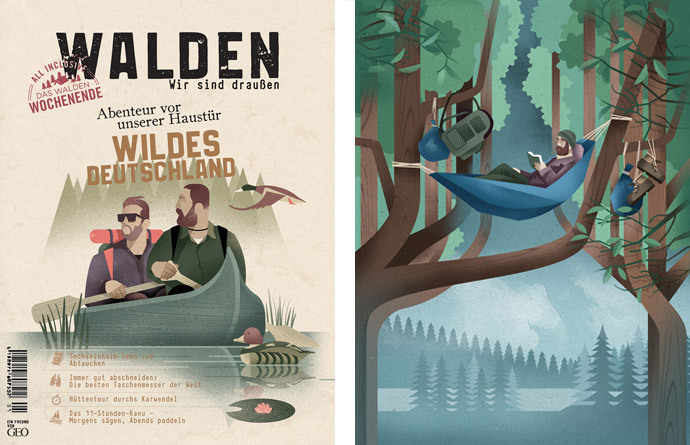
WALDEN, Wir sind draußen is the magazine for everyone who likes to be outdoors. It is full of inspiration for adventures on our doorstep, interesting facts about nature and being out and about, as well as ideas for things that everyone can experience for themselves outside.
"When I was a child, I was obsessed with animals and wildlife. I remember that I started drawing and making a wildlife book when I was very young, but I wasn’t patient enough to make more than three spreads. It took me decades to come back to this project." — Dieter Braun
The German well-known freelance illustrator and children's book writer Dieter Braun grew up in the town of Dinslaken, in North Rhine-Westphalia and moved to Hamburg in the late 1990s. He grew up in the countryside and spent half of his childhood outside. As a little boy, he watched a lot of wildlife documentaries and often spent time at the zoo which inspired him to his first drawings. His parents were very supportive of his interest in art, and when he became ten years old they gave him a set of oil paints and an easel. Though he was quite young, Braun tried his hand at painting. At first his paintings were quite amateurish, but over time he got better, eventually realising that he wanted to do it professionally. He went on to study communication design at the Folkwang University of the Arts in Essen and after a while gravitated towards illustration. During that time he undertook his first commissions as a professional illustrator and received his first assignments from various small agencies in the Ruhr area.
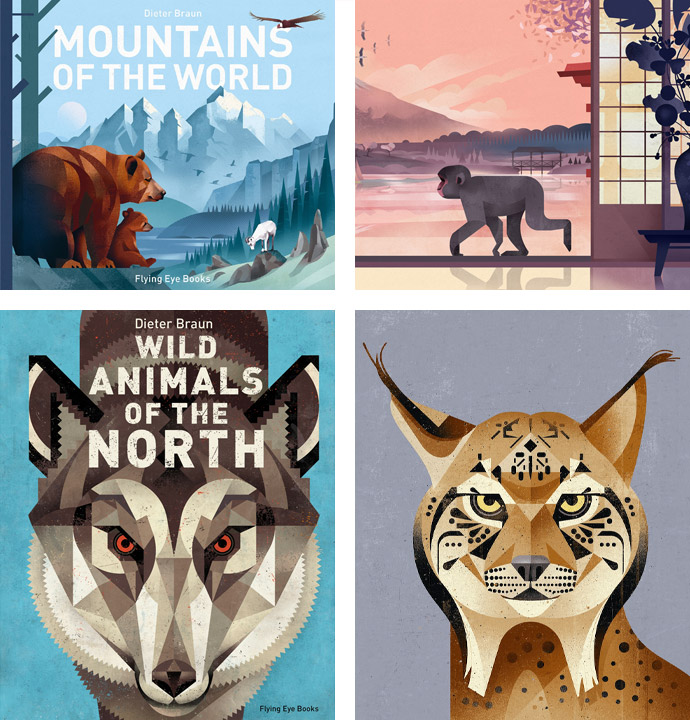
Dieter Braun presents the animals of the northern hemisphere in gorgeous and colorful pictures. Whether polar bear or orca whale in the Arctic, red fox or swan in Europe, pumas in North America or pandas in Asia — he has portrayed them all in great detail in ingenious drawings. With his keen observation skills, his innovative narrative style and his inimitable humor, Braun puts the world of animals in the spotlight.
ANIMALS IN A NATURAL WORLD
Showing animals in natural world is a key focus of his books. Dieter Braun wants to share all of the beauty of nature. The Hamburg illustrator has traveled the world for many years to research animals up close, to observe the local wildlife in its natural habitat. He took many photos that capture multiple different views of animals. He also often visits zoo’s, read books and magazines about natural topics, but most of his research is online. He observes their behavior and physicality. His expressive geometric illustrative style flow from these inspirations.
The use of geometry within his illustrations — particularly in his most recent books — really helps capturing the physicality of each animal. Having spent a lot of time researching animals Braun can now see which geometric forms fit best to capture the physicality of an animal. He makes illustrative simple animal portraits and landscapes in which character and characteristics are nevertheless shown.
His favorite books include two illustrated animal encyclopedias from the 1960s. He found his childhood drawings again and the idea of drawing his own animal book came back to life. It was only a few pages because he didn't have the patience for a whole book at the time. It took many years before Braun completed Die Welt der wilde Tieren. His digitally rendered animal illustrations are also influenced by other children’s books and vintage and Japanese design books he collects.
Braun has also written several children books. After the acclaimed start of the series — awarded as “bestes Kinderbuch national” by Freestyle Online — and the successful Christmas book, Nukka && Isi auf der Suche nach dem Weihnachtsmann, (“das schönste Weihnachtskinderbuch”, Die Zeit), the Inuit girl Nukka and her best friend, the arctic fox Isi, are setting off on their adventure for completely different regions. They will experience the heat of the Sahara and solve the mystery of the ship of the desert; Nukka & Isi auf großer Fahrt and Nukka & Isi und das Wüstenschiff. From the North Pole, they travel around the world to visit penguins. On the way they meet a friendly whale, a helpful octopus, an old captain and many other sea creatures.
"I don't draw animals in a lovely and cute way, but graphically reduced." — Dieter Braun
ENDANGERED SPECIES
His animal non-fiction books include Die Welt der wilden Tiere – Im Süden (2015) and Die Welt der wilden Tiere – Im Norden (2016). Another book at Knesebeck was Die Welt der Berge (2018). These books were recognized by the Book Art Foundation as one of the most beautiful books of that specific year. Die Welt der Berge is a masterpiece in explaining what the mountains are and inevitably the perfect book to prepare children for their first visit to the mountains. In short, factual texts, Braun answers questions that, as he writes in the foreword, he asked himself when he was still a child in the lowlands: “What is a mountain? How is a mountain formed? Who lives at the top? Maybe the Yeti?” His answer to the latter: Yes, at least in the imagination of people who have always populated the icy heights with mythical creatures. Braun takes on a childlike, amazed, curious perspective —without overlooking the dangers and negative phenomena of alpinism. Mass tourism on Everest, for example, which kills many amateur climbers because they overestimate their abilities. Or the rubbish left by hikers and which rots more slowly in the thin mountain air than in the valley.
All these beautifully illustrated books present more than a hundred wild animals from Europe, America and Asia. Braun is a keen observer, who portrays each animal as aesthetically as it is true to nature. Nearly a third of the animals in the books are on the endangered species list, some are even threatened with extinction. And while humanity can probably do without these animals, with each animal species a piece of the versatility of our lives disappears. His beautiful drawings are accompanied by fluently written information about the living habits of the animals portrayed. His books, which is already an international success, invites you to leaf through it breathlessly, whether the reader is a child or an adult or loves art or nature. Die Welt der wilden Tiere has been translated into eleven languages. Braun is really happy when his illustrations encourage sensitising children and adults to being aware of ecological issues.
During the first lockdown, in which so many families were stuck at home with their children, Braun made illustrations available for free downloading and coloring. Therefore, his latest publication, Outliners, is a coloring book, published in March this year. It reflects the diversity of the illustrations: on 96 pages you will find the themes of birds, big cats, vehicles, dinosaurs, travel, sea animals, food and drink, steppe animals and jungle. The respective pictures are waiting to be brought to life with colored pencils.
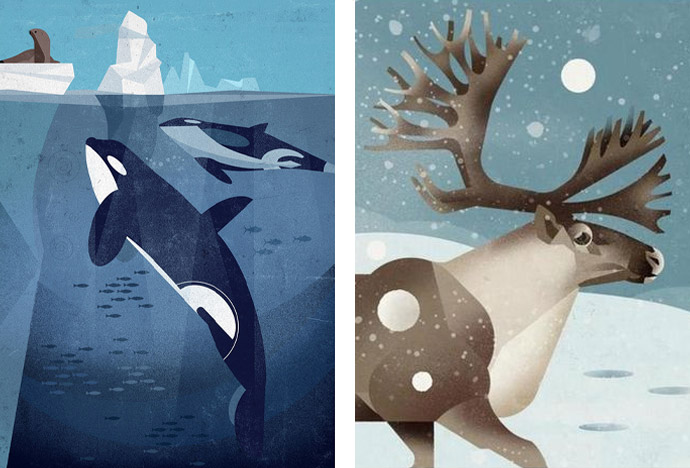
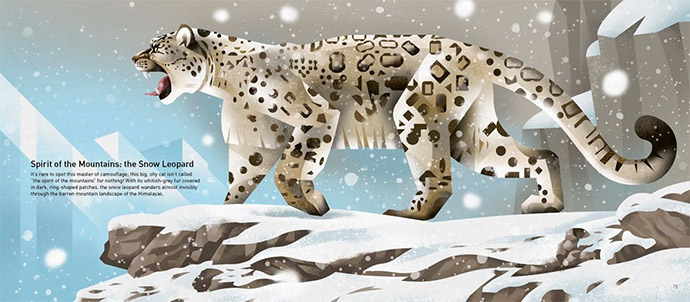
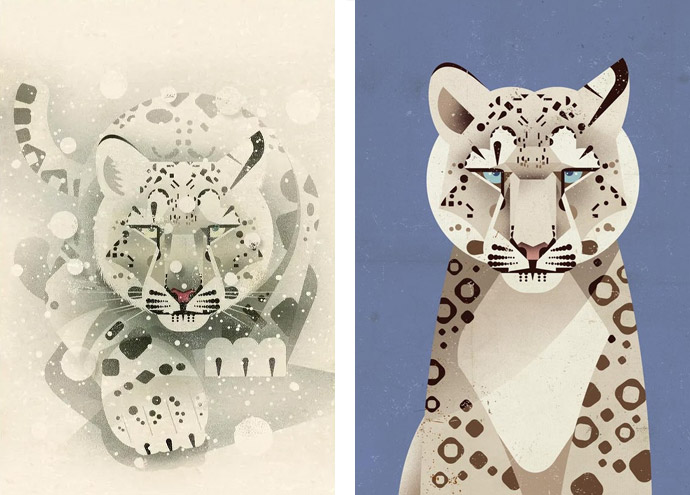
To the highest peaks on earth — from the Alps to the Andes of South America and even to the Himalayas — Dieter Braun presents the most famous mountains and their animal inhabitants, from marmots to snow leopards, among other things, in powerful colors.
"I really like the idea that my books are understood in relation to conservation issues. I think communicating a certain ecological sensitivity is more and more important. I’d be really happy if my illustrations encourage sensitising children and adults to being aware of ecological issues." — Dieter Braun
ART DECO PRINTS
Dieter Braun shares his studio with four photographers and an architect. The shelf wall behind his adjustable table is full of his favourite curious and books, vinyl toys, a turntable and a collection of records. A very recognizable phenomenon! His style has evolved over the years. If you look at his illustrations from many years ago, it's really different from the work he makes nowadays. He started working digitally in the early 90s, when computers were much slower and graphics programs weren't as complex as they are now. I can still vividly picture it as I first used Aldus Freehand on an Apple IIsi back in 1990. Thereby Braun's illustrations evolved as technology evolved.
Braun's books fascinate children and adults due to the solid aesthetics of the images. They are vector graphics that he composes in layers in Adobe Illustrator from simple basic geometric shapes such as lines, circles and rectangles. Animals and landscapes thus show clear edges with colored surfaces and shadow effects in such a way that they have a pulsating liveliness. Braun alo scans handmade patterns and textures and add them to Photoshop. The computer makes it possible for him to design images that are reminiscent of old printing techniques, although he can intervene more purposefully. At best, the drawings do not show how they were created. He makes them look like old prints, tends towards retro, art deco and muted colors. And yet, modernity becomes clear in his works. Its illustrations and content are fascinatingly harmonious.
Braun's narrative style also appeals to both young and older readers. Braun works as a freelance illustrator for international newspapers and magazines, whose repertoire of journalistic means of representation includes information graphics. It is important to present complex relationships in an understandable and visually appealing way — in this respect, Braun's work as a communication designer is similar to that as a children's non-fiction author.
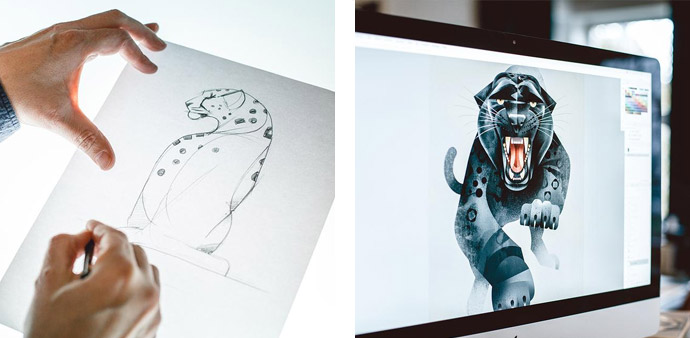
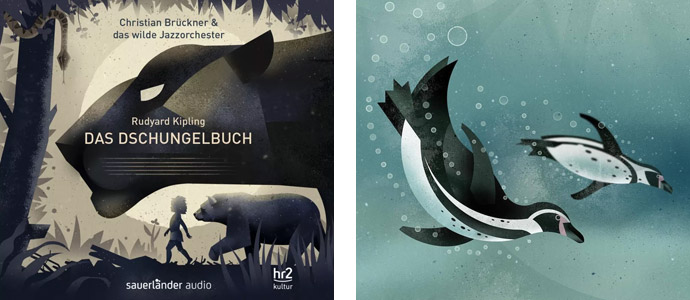
"While most of my work is digital, I like to make it look as though it had been created using traditional printing techniques." — Dieter Braun
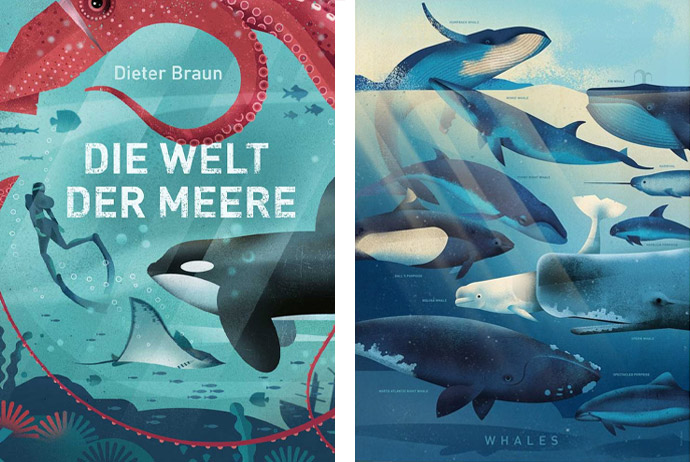
From the deep oceans to the rather shallow North Sea, Dieter Braun takes you into the fascinating world of the seas. The colorful illustrations are accompanied by short texts that provide data and facts about the seas.
The list of his customers is so long that it seems almost impossible to list them. To mention a few, the artist has been commissioned by Time Magazine, The New York Times, Süddeutsche Zeitung, Time, WWF, GEO Magazine, Stern and The Wall Street Journal.
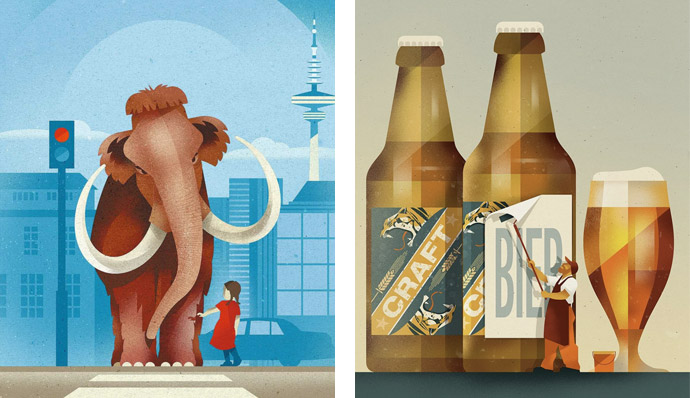
Left: Illustration of a mammoth for ZEIT Leo, Die Seite für Kinder, June 2020 | Right: Cover illustration fo the first issue of the new mag BIER BARS & BRAUER, 2017.
All images courtesy of the artist.
More story related movies/interviews:
Related stories on Woodland:
Sources:
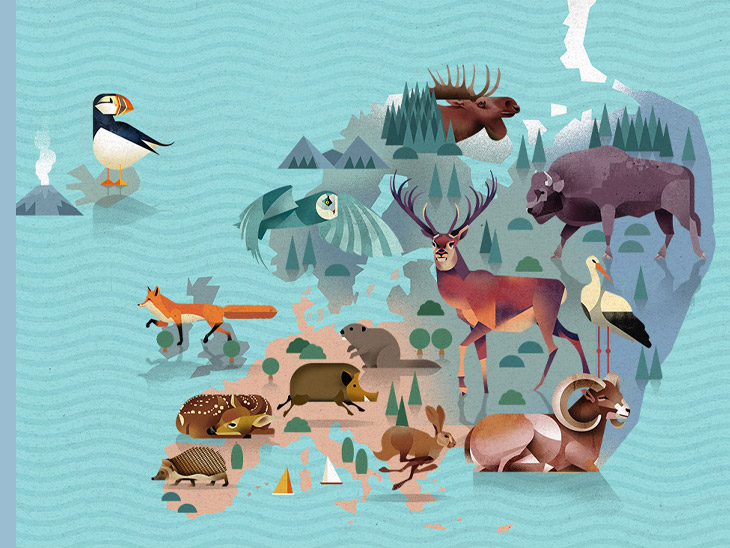

1 comment
Hi Joël,
Wow, I'm speechless. Thank you so much for this great and so detailed report about my work!
I am really looking forward to it and will gladly share it on my pages as soon as it is online. I wouldn't have anything to change either.
Thanks again and good luck and success with your future projects.
Kind regards from Hamburg,
Dieter